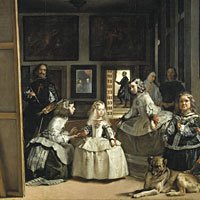60-day returns • free shipping on USA orders $129+


As we have seen over the past couple of weeks, the Charlotte Mason method of picture study is a simple yet effective way to give our children art appreciation, fill their minds with beautiful ideas, and offer even more opportunities for them to make relations with what they are learning.
Over the years that we’ve been discussing and explaining picture study here at SCM, a few questions have appeared repeatedly. So we would like to mention them here, in case you have the same question. Hopefully these answers will be helpful.
Q: Should the artist that I select match the history time period we’re studying?
A: It is not important to study artists in chronological order, and we do not give young children teaching on art history periods; rather, they will assimilate this information as their history reading progresses, and their knowledge of art increases. Breathe a sigh of relief—you, the teacher, don’t have to know about art in order to teach picture study! “[T]he first and most important thing is to know the pictures themselves” (Towards a Philosophy of Education, p. 216). It can be helpful to choose artists to study who painted during, or pictured scenes from, the history period you are studying, although this is not necessary. More important, make sure that the styles of the artists studied during the year are different from one another to avoid confusion for your children.
Q: Should I ask my child to try to reproduce the picture?
A: After looking and describing . . . a six- to nine-year old then describes what he saw with all the details he took in, maybe drawing a few lines to show where various objects were located—all from memory. An older child adds to this narration a description of the lines of composition, light and shade, and the style of this artist, as he is able (all of this knowledge comes through the simple study of pictures in this manner, week after week, short lesson after short lesson). High school students may render in mono-chrome (all one color), and from memory, as many details of the picture as they can remember. Don’t have your children attempt to reproduce the picture exactly; Charlotte Mason said this lessens a child’s reverence for the artwork (Towards a Philosophy of Education, p. 216).
Q: (We’re going to combine the last two questions into one, because the answer will apply to both.) What if I don’t know anything about artists; where do I begin? and Where can I find a good, short, living biography of the artist?
A: The picture study section of our free SCM Curriculum Guide will give you a beginning list of artists to explore. Each artist’s name is linked to resources in our CM Bookfinder. Those resources will be a great place to start. You can also search online for other biographies and collections of various artists’ works.
Next week we will tell you about a brand new resource from SCM that will make this process a whole lot easier. Stay tuned!
